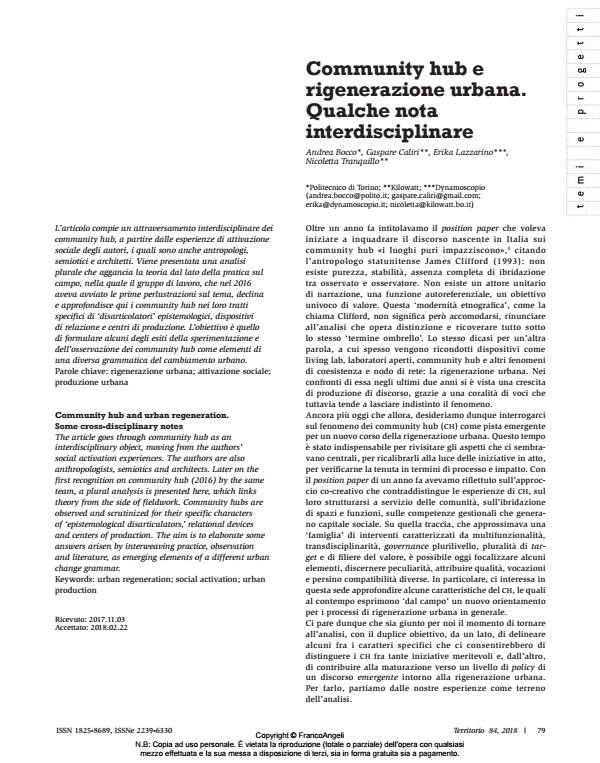Community hub e rigenerazione urbana. Qualche nota interdisciplinare
Titolo Rivista TERRITORIO
Autori/Curatori Andrea Bocco, Gaspare Caliri, Erika Lazzarino, Nicoletta Tranquillo
Anno di pubblicazione 2018 Fascicolo 2018/84
Lingua Italiano Numero pagine 8 P. 79-86 Dimensione file 341 KB
DOI 10.3280/TR2018-084012
Il DOI è il codice a barre della proprietà intellettuale: per saperne di più
clicca qui
Qui sotto puoi vedere in anteprima la prima pagina di questo articolo.
Se questo articolo ti interessa, lo puoi acquistare (e scaricare in formato pdf) seguendo le facili indicazioni per acquistare il download credit. Acquista Download Credits per scaricare questo Articolo in formato PDF

FrancoAngeli è membro della Publishers International Linking Association, Inc (PILA)associazione indipendente e non profit per facilitare (attraverso i servizi tecnologici implementati da CrossRef.org) l’accesso degli studiosi ai contenuti digitali nelle pubblicazioni professionali e scientifiche
L’articolo compie un attraversamento interdisciplinare dei community hub, a partire dalle esperienze di attivazione sociale degli autori, i quali sono anche antropologi, semiotici e architetti. Viene presentata una analisi plurale che aggancia la teoria dal lato della pratica sul campo, nella quale il gruppo di lavoro, che nel 2016 aveva avviato le prime perlustrazioni sul tema, declina e approfondisce qui i community hub nei loro tratti specifici di ‘disarticolatori’ epistemologici, dispositivi di relazione e centri di produzione. L’obiettivo è quello di formulare alcuni degli esiti della sperimentazione e dell’osservazione dei community hub come elementi di una diversa grammatica del cambiamento urbano.
Parole chiave:Rigenerazione urbana; attivazione sociale; produzione urbana
- The Valuation of Idle Real Estate in Rural Areas: Analysis and Territorial Strategies Anna Richiedei, in Sustainability /2020 pp.8240
DOI: 10.3390/su12198240
Andrea Bocco, Gaspare Caliri, Erika Lazzarino, Nicoletta Tranquillo, Community hub e rigenerazione urbana. Qualche nota interdisciplinare in "TERRITORIO" 84/2018, pp 79-86, DOI: 10.3280/TR2018-084012